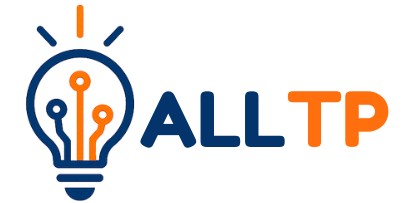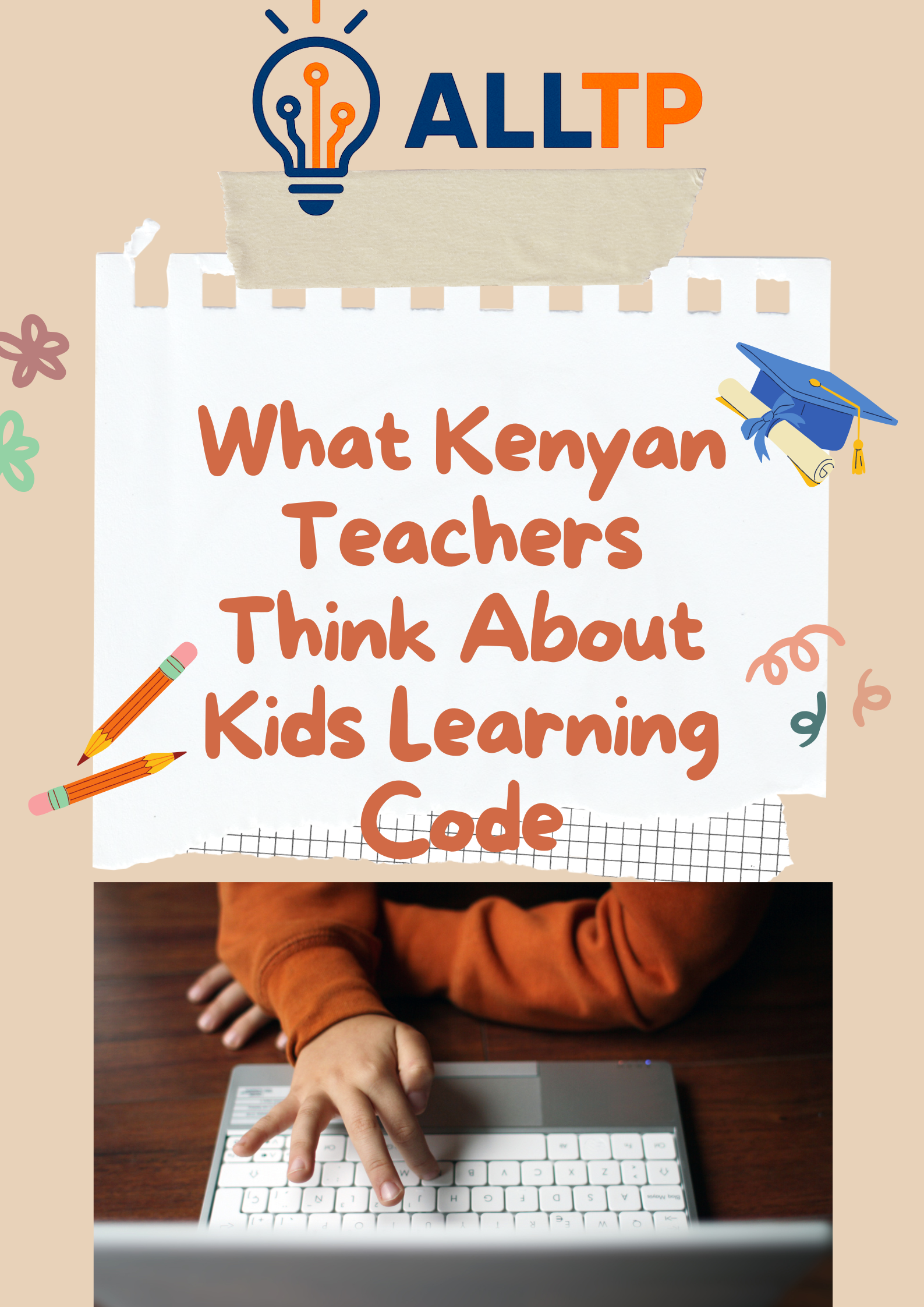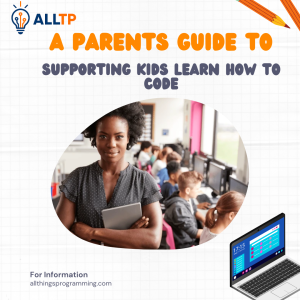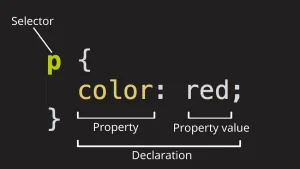In recent years, Kenya has made significant strides toward becoming a digitally empowered nation. From mobile money innovations to tech hubs sprouting across the country, the demand for digital skills is on the rise. As part of this shift, coding is increasingly being recognized as a fundamental skill for the 21st century.
Schools are beginning to explore how coding can be introduced to learners at an early age, not just as a technical skill but as a new form of literacy. However, the success of this initiative largely depends on the people at the heart of education teachers. Understanding Kenyan teachers’ attitudes, challenges, and recommendations around coding is crucial to building a practical and inclusive digital learning environment for all students.
Now is the time to introduce coding for kids in every corner of Kenya. Whether through Scratch in primary schools or beginner-friendly bootcamps during holidays, early exposure to programming unlocks creativity, confidence, and future career pathways.
Let’s support our teachers with the training and tools they need and equip our children with the skills to become creators in the digital world. Enroll your child today in our coding bootcamp and be part of Kenya’s tech transformation.
The Current State of Coding Education in Kenya
1. ICT Integration in the Competency-Based Curriculum (CBC)
Kenya’s education system transitioned to the Competency-Based Curriculum (CBC) starting in 2017. This curriculum emphasizes key competences, including digital literacy, alongside critical thinking, creativity, communication, citizenship, and collaboration. Within this framework, coding has been formally introduced as a subject in both primary and secondary school, a pioneering move widely recognized across Africa.
2. Government and Private Initiatives Driving Coding Education
In April 2022, the Kenya Institute of Curriculum Development (KICD) approved the first-ever national coding syllabus for learners aged 7–16. Developed by Kodris Africa in partnership with KICD and internationally accredited by Pearson, this syllabus teaches algorithmic thinking, debugging, and logical operators using languages like Python and block-based interfaces.
The ICT Authority (ICTA) has signed a Memorandum of Understanding with Kodris Africa to roll out the course within the Digital Literacy Programme (DLP). Through this programme, over 1.2 million laptops and tablets have already been distributed, and more than 22,000 schools connected to electricity and internet services Kenyatta University+9Capital FM+9The Star+9. A pilot launch in approximately 150 schools (100 secondary and 50 primary) began following this MOU in mid‑2022 The Star.
3. Urban vs. Rural School Access to ICT Infrastructure
Kenya has made notable progress in digital provision through the DLP. Still, access remains uneven. Surveys have shown that 94% of primary schools lacked ICT equipment, with only a small fraction (mostly private institutions) possessing functional computer labs.
Rural and marginalized schools continue to face significant infrastructure challenges, intermittent electricity, weak internet connectivity, and limited maintenance capacity compromise the effectiveness of the DLP in many areas kais.or.ke+9researchgate.net+9Reddit+9. While urban schools, particularly in Nairobi and other county centers, benefit from better connectivity and infrastructure, many rural institutions remain disconnected from reliable technology resources.
Additional support has been offered by actors like Nokia, Safaricom, and UNICEF, which connected nearly 90 remote schools to 4G internet as part of efforts to boost digital literacy. However, scaling remains a challenge, with coverage still limited compared to urban centers Reddit.
Teachers’ Attitudes Toward Coding for Kids
1. Enthusiasm and Growing Interest
Many Kenyan educators express genuine interest in integrating coding into their classrooms. Teachers trained during events like Africa Code Week such as Mr. Thomas Munga from Mombasa shifted from limited exposure to self-taught learning trajectories. He reflected:
“Coding was like a foreign thing to me… but I learnt that anyone can be a programmer…”
2. Belief in Key Benefits
Educators widely recognize that coding:
- Fosters problem-solving and critical thinking, enabling students to break down tasks and think logically.
- Unlocks creativity, allowing learners to design projects and apps.
- Develops future-ready skills, aligning with global digital demands and broadening career possibilities. CodeWeek advocates pinpoint skills like analytical thinking, collaboration, and algorithmic reasoning as core outcomes from early coding integration kenyacodeweek.orgkenyacodeweek.org.
In higher education, KICD leadership emphasizes coding as a practical thinking tool that allows children to become creators, not just consumers, in the digital economy
3. Apprehension and Perceived Barriers
Despite enthusiasm, many teachers voice concerns:
- Lack of training and preparedness: The rapid introduction of coding into CBC caught many educators off-guard. Most have not received sufficient professional development to feel confident teaching programming content.
- Perception of complexity: Some regard coding as overly technical or “foreign,” which fuels hesitation, especially among teachers without prior STEM backgrounds.
- Curriculum overload: With competing subjects and limited class time, many teachers worry about integrating coding meaningfully into an already full timetable
- Cultural framing concerns: While not always directly stated, some fear coding is viewed as a Western influence and question its cultural relevance if not carefully contextualized.
4. Mixed Classroom Experiences
Case studies across Kenyan schools highlight how attitudes vary:
- At St. Charles Lwanga in Mombasa, teachers like Linah Anyango began with limited expectations but then catalyzed significant student interest after exploring Scratch and Python. Students developed apps addressing real societal issues, and girls’ participation in science rose notably following coding exposure
- Reddit reflections echo skepticism about the traditional Computer Studies curriculum. One commenter noted:
“A high school student who takes computer studies … will graduate without knowing anything about CODING… programming is a really essential part of tech … this cripples Kenyan students.”
Key Challenges Teachers Highlight
Despite growing enthusiasm for coding in Kenya, many teachers across the country face significant hurdles when it comes to teaching coding for kids effectively. These challenges range from infrastructural limitations to policy-level inconsistencies that affect classroom delivery and hinder widespread adoption in both urban and rural schools.
1. Lack of Training and ICT Background
A large number of teachers have not received formal training in programming or digital literacy instruction. Many educators even those teaching ICT or computer studies report only a basic understanding of how coding works. This knowledge gap creates anxiety about introducing coding into lessons. According to interviews during Africa Code Week and Kodris Africa pilot programs, teachers often feel underprepared and express a strong need for ongoing professional development.
“I only knew how to open Microsoft Word. Now I’m expected to teach Scratch or Python?” – Primary school teacher, Kisii County
2. Insufficient Access to Equipment and Connectivity
Although the Digital Literacy Programme (DLP) has distributed over a million digital devices, access remains uneven. Many rural and public schools still lack basic infrastructure, including reliable electricity, internet access, and functional devices. Even where equipment exists, teachers report:
- Broken or outdated computers.
- Limited access to labs due to shared usage.
- Lack of relevant software or digital platforms.
“We have tablets in the cupboard, but no one knows how to use them and there’s no Wi-Fi.” – Headteacher, rural school in Turkana
3. Overloaded Curriculum and Limited Teaching Time
With the CBC already emphasizing multiple learning areas, teachers feel stretched thin. Many report that coding is introduced as an “extra” topic rather than an integrated one, meaning it gets sidelined when core subjects demand more time.
- Coding is not examinable in early grades, reducing urgency.
- Timetables rarely allocate structured time for digital skills.
- Some teachers are expected to cover coding on top of other full teaching loads.
4. Inconsistent Government Support and Policy Clarity
Although coding has been approved by KICD and supported by the Ministry of ICT, many teachers report unclear guidelines on implementation:
- Confusion over whether coding is a standalone subject or integrated into ICT.
- Lack of standardized teaching materials or assessment rubrics.
- Minimal follow-up or monitoring from education officers after device distribution.
What Teachers Need to Support Coding Education
For coding education to thrive in Kenya’s primary and secondary schools, teachers need more than just good intentions, they need meaningful, consistent support. Based on feedback from educators across urban and rural regions, here are the key areas they’ve identified as essential:
1. Capacity Building: Training Programs and Workshops
Many teachers have limited or no background in coding. To effectively deliver lessons, they need:
- In-person and virtual training on tools like Scratch, Blockly, Python, and micro:bit.
- Workshops tailored to different experience levels, from beginner to advanced.
- Ongoing professional development cycles, not just one-off training.
Africa Code Week, KICD-backed CPD programs, and bootcamps from Kodris Africa have helped some teachers, but access remains limited, especially outside urban centers.
2. More Infrastructure Support
Teachers often cite lack of equipment and connectivity as a major obstacle. To create effective coding environments, schools need:
- Reliable internet access to run coding platforms or download learning resources.
- Functional devices (computers, tablets, Raspberry Pis) with updated software.
- Basic digital labs with power backups, especially in off-grid or rural areas.
3. Clear Curriculum Integration and Teaching Resources
Uncertainty about how and when to teach coding within the CBC is a recurring challenge. Teachers need:
- Structured lesson plans and pacing guides aligned with CBC learning areas.
- Ready-to-use teaching materials, like coding projects, assessments, and student handouts.
- Clarity on coding’s position in the curriculum: Is it a standalone unit? Is it examinable?
Many teachers are enthusiastic but lack clear direction from the Ministry or KICD on assessment and lesson structure.
4. Peer Networks and Mentorship
Teachers benefit significantly from communities of practice. Establishing peer-support networks can allow them to:
- Share lesson plans, challenges, and success stories.
- Access mentors or “master trainers” with more coding experience.
- Join regional or national platforms (like Kenya Code Week Networks) for collaboration.
Some educators have created WhatsApp groups or informal coding circles, but these need institutional backing to scale and sustain.
Recommendations from Educators
As more schools explore how to implement coding in the classroom, Kenyan teachers are offering valuable, experience-based insights. Their recommendations focus not only on content, but also on how coding is taught to ensure it’s engaging, inclusive, and impactful for learners of all levels.
1. Start with Simple, Age-Appropriate Tools
Teachers recommend introducing learners to visual programming languages like:
- Scratch – for drag-and-drop programming and storytelling.
- Blockly – for logic and sequencing, especially in upper primary.
- Tynker and micro:bit – for interactive, physical computing.
These tools help students grasp core programming concepts without needing to write syntax-heavy code. They are ideal for early learners and help reduce intimidation, especially in classes where literacy or digital exposure may be limited.
2. Integrate Coding Across Subjects
Rather than teaching coding as a separate subject, many educators suggest embedding it into other learning areas to make it more relevant and manageable:
- Use Scratch for storytelling in language classes.
- Apply coding to teach math concepts like patterns, logic, or coordinates.
- Link science experiments to simple programs (e.g., simulating weather or plant growth).
This approach helps students see coding as a tool for problem-solving across disciplines not just a standalone tech skill.
3. Emphasize Creativity and Real-World Relevance
Teachers agree that coding is most effective when learners build projects connected to their lives:
- Apps that solve local problems (e.g., waste disposal trackers, school attendance tools).
- Animations about community stories, environmental messages, or safety alerts.
- Projects that align with national priorities like digital agriculture, climate awareness, or entrepreneurship.
This helps learners understand that code is not just abstract, it can be used to change their world.
4. Foster a Culture of Experimentation and Patience
Coding involves trial and error. Teachers emphasize that students and educators themselves need a mindset of resilience and curiosity:
- Encourage students to debug, revise, and try again.
- Celebrate small wins and learning moments, not just perfect projects.
- Let students work in pairs or groups to solve challenges collaboratively.
This shift in classroom culture builds problem-solving skills and reduces frustration.




